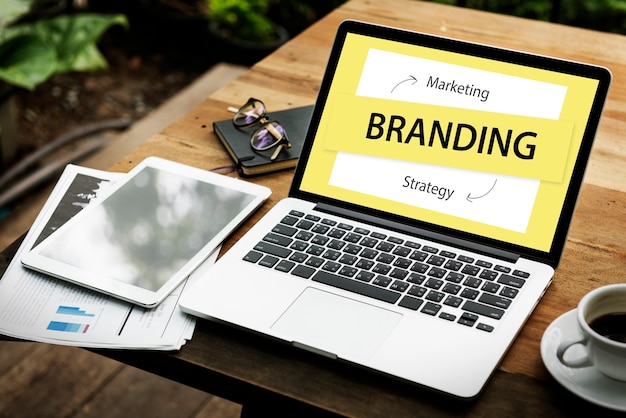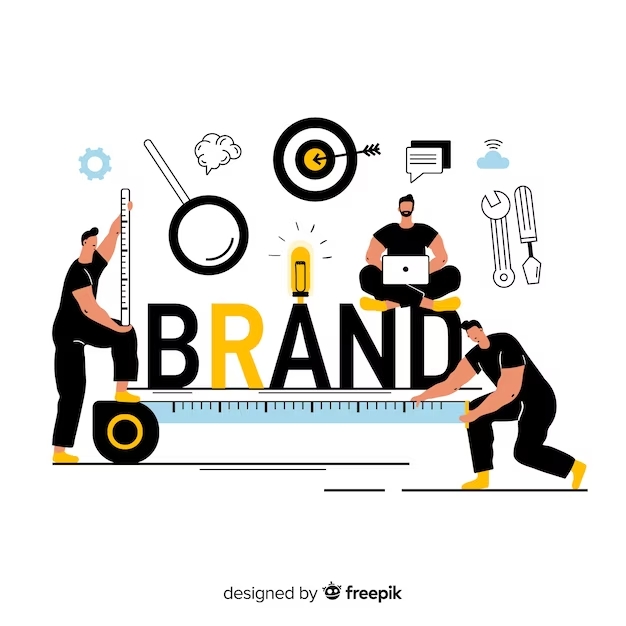Advantages and Disadvantages of Branding
Are you curious to know of the advantages and disadvantages of branding When it comes to building a business, one of the most crucial steps is creating wide awareness of your products or services. This is where branding steps in as a hero, waving its magic wand to spread the word about your business far and wide. But, as with all great things, this magic comes with a price tag. the cost of branding can be steep. It’s not just about designing a logo or printing business cards.
It’s an ongoing campaign that involves market research, advertising, customer engagement, and so much more. It’s a long-term investment that requires not just money, but time and effort too.
So, how do businesses balance the need for awareness with the cost of branding? It’s all about smart investment. You don’t need to throw all your money into flashy ads. Sometimes, the most effective branding is about connecting with your customers, understanding their needs, and delivering on your promises.
what are branding and the advantages and disadvantages of branding?
Branding is akin to storytelling. It’s how a company communicates who they are, what they believe in, and why they exist. It’s not just about a logo or a catchy jingle; it’s the entire persona of the business that resonates with consumers. You can do online branding Through various Digital marketing platforms such as by doing SEO, paid Ads, Social media Marketing Etc…
The Name
The name of a company is the first step in the branding process. It’s the cornerstone of the brand identity, often the first thing a customer learns about your business. A well-chosen name is easy to remember, reflects the company’s ethos, and sets the tone for all other branding efforts.
Identity System
The identity system includes visual elements like logos, color schemes, typography, and imagery that create a visual representation of the brand. It also encompasses verbal language, such as the tone of voice, taglines, and copywriting style.
The Outcome
When these elements are combined effectively, they create a distinctive brand identity. This identity is what makes a brand recognizable and memorable. It’s what sets it apart from competitors and builds an emotional connection with consumers. A strong brand identity can inspire loyalty, and advocacy, and can even allow a company to charge a premium for its products or services. In essence, branding is about creating a lasting impression in the minds of its Consumers.

5 key advantages of Branding
Creates Wide Awareness:
Branding is like a megaphone for a business. It helps spread the word about what the company offers, reaching more people than it otherwise would. Just like a catchy song that gets stuck in your head, good branding sticks with people, making them more aware of the company’s products or services.
Acquires Customers Easily:
A strong brand is like a trusted friend; people are more likely to try something new from a brand they recognize and trust. It’s like seeing a familiar face in a crowd; you’re drawn to it. This trust makes it easier for businesses to bring in new customers who feel confident in their choices.
Increases Profitability:
When a product or service is well-branded, it’s often seen as more valuable, just like a designer label on clothes. This perceived value allows businesses to set higher prices, which can lead to better profits. It’s like being able to sell an ordinary white t-shirt for more just because it has a famous logo on it.
Enhances Business Value:
A strong brand doesn’t just make customers happy; it also catches the eye of investors. A well-known and respected brand can make a company more attractive to invest in, much like a popular restaurant in town that everyone wants a piece of.
Supports Business During Crises:
Just like a good friend who’s there for you when times get tough, a well-established brand can count on its loyal customers to stick around, even when the market is shaky. These customers keep the business going, providing a safety net that can help the company survive and bounce back.
In essence, branding is about making a business known, trusted, and valued, both by customers and investors. It’s a powerful tool that, when used wisely, can support a company’s growth and stability through all kinds of market conditions.
5 key disadvantages of Branding
As with every good thing around us, branding also comes with a few disadvantages.
Costly Process
The overall process of branding comes with a huge price baggage. From the very first step of carrying out market research to designing a brand logo or creating packaging for the product, it is very expensive. For smaller brands, it’s a huge expense, often leaving them with a large hole in their pocket.
Extremely Risky
Branding as a process is a huge responsibility, followed by great risks. One wrong step in the process can lead to damage to the brand’s image which often leads to consumer cuts and losses. After that, rebuilding the consumer base and trust is a very difficult task.
Very Less Flexibility
As brands grow in size, consumers start associating the brand with specific qualities and characteristics. To rebrand a product after that becomes very difficult as changing something means every consumer will have to readapt which is very rarely seen. It often limits the innovation and expansion of the brand.
Time-consuming Process
Building a brand from scratch is a huge task and a tedious one at that. Sometimes companies focus too much on a brand image that they end up compromising it with the quality of their products and services.
Very Difficult to undo
As mentioned above, creating a brand from scratch takes a lot of time and once it’s been out in the open for a long time, the consumers start to associate the brand with certain characteristics. So, if a brand wants to undo something, be it changing or even altering the logo, it is very difficult.
5 Real Case Studies of the Advantages of Branding
We all have seen a few brands that just do not go out of fashion, no matter what. That’s because of their killer branding strategies. Let us take a look at a few brands that killed it in the market because of their amazing brand strategies.
Mastering the art of connection with storytelling – Nike
Nike is one of the most sought-after brands in the market. Be it Nike’s sports apparel or Jordans, it has consistently remained a top player in the market. One of the main reasons that people connect with Nike so well is because of its brand image, and its branding techniques where it offers a personalized experience to the consumers by connecting emotionally with them using the art of storytelling through its marketing campaigns.
Innovation, trend, and a personalised touch – Apple
It’s impossible to ignore Apple when we talk about brands that have taken the world by storm with their products and marketing ideas. We think of Apple and words like sleek, minimalistic, flawless, and class often come to mind. That’s the result of Apple’s strong branding technique that people associate with creativity and out-of-the-box.
Warmth, values, and vision – Airbnb
A feeling of warmth is what someone feels when they look at Airbnb’s content, be it their website, advertisements, or their social media. Even their pictorial logo is made of soft colors and a small heart, conveying warmth. The way Airbnb marketed a simple idea and made it their USP is what branding is all about. People look up to Airbnb’s social media for stay recommendations; it showcases their vision clearly, and also how personalized and eye-catching their content is.
Making convenience more convenient – Amazon
It’s impossible to ignore the impact Amazon has had on the current generation. With a brand image of making everything easily accessible, Amazon hit it right out of the ballpark. They portray themselves as the mediator between the buyer and the seller whom everyone needs. If that isn’t an example of exceptional branding, we don’t know what is.
Homely, sustainable, and pocket-friendly – Ikea
With Ikea’s entry into the market, home decor became easy and affordable like never before. They marketed themselves as sustainable, inclusive, cheap, and a customer-friendly brand. Needless to say, their branding strategies are one to reckon with.
5 Real Case Studies of the Disadvantages of Branding
Branding and rebranding don’t always reap benefits. A few famous companies are clear examples of it.
Inflexible: GAP’s logo redesign
Consumers are often averted to changes. GAP’s logo change in 2010 was a perfect example of this. In an attempt to bring a modern touch to the very old logo of the brand, they changed it (very slightly). It backfired badly for the company, people hated the new logo and made memes and Twitter threads expressing their disbelief. It took such a huge turn that the company had to withdraw the new logo within 6 days of its release. This a classic example of a branding technique gone wrong.
Very difficult to undo – Burger King’s 2021 Women’s Day tweet
Burger King, known as the master of the food chain industry took one wrong step in its branding process and it became very difficult to undo. In 2021, on the occasion of Women’s Day, Burger King tweeted, “Women belong in the kitchen”, followed by another tweet saying “Only if they want to, of course” but the damage was already done. The first tweet caught fire on social media with people claiming brands do unexplainable things to garner attention. A wrong step in the direction of product branding.
Extremely risky – Audi’s wedding commercial
Audi took a huge blow with its 2017 wedding commercial where a bride was being inspected by her mother-in-law for any physical flaws. She checked her various physical features and gave a nod of approval but as people released a sigh of relief, she looked at her chest and the scene changed to a red Audi Sedan saying “An important decision must be made carefully”. As can be understood, the ad received a huge backlash for its distasteful portrayal of women. This signifies how one small mistake, which the marketing team must have ignored during the market research led to such a blowout.
Expensive and risky – American Airlines
One of the biggest branding failures has to be that of American Airlines. In the early 1980s, American Airlines to revive their reduced consumer base took the step of offering an “AAirpass”, meaning unlimited first-class air travel for a very low rate. When such steps are discouraged in today’s times, American Airlines offers a life-long membership along with it. In the leading years, the company lost millions of dollars. It clearly shows how some branding decisions taken in haste can cost you a lot.
Less flexibility – CocaCola’s ‘New Coke’ flavor
Coca-Cola was the biggest name in the late 90s but Pepsi was doing great work in bridging that gap with amazing ads. To bounce back, Coca-Cola came out with a ‘New Coke’ flavor in 1983. It tested the product on 200,000 subjects and 53% of them liked it but what came as a surprise was when it was released in the market, people hated it. Coca-Cola received 400,000 calls from angry customers saying they liked the old flavor more. It indicates that branding isn’t always flexible and consumers have a habit of getting accustomed to certain qualities of a product and they don’t like change.
Conclusion
Branding is a double-edged sword; it can build a business’s reputation and customer base but can also become a costly and complex process that may backfire if not handled correctly. The key to successful branding lies in understanding the market, consistent messaging, and maintaining a strong connection with customers. While the advantages of branding are numerous, companies must be aware of the potential pitfalls and navigate them carefully to ensure long-term success.
